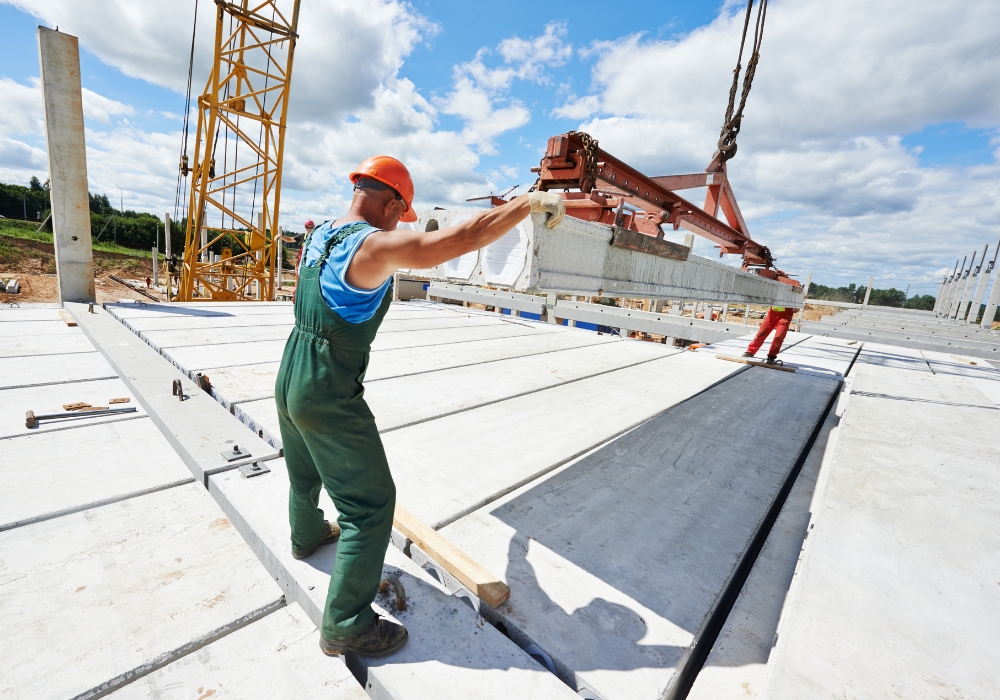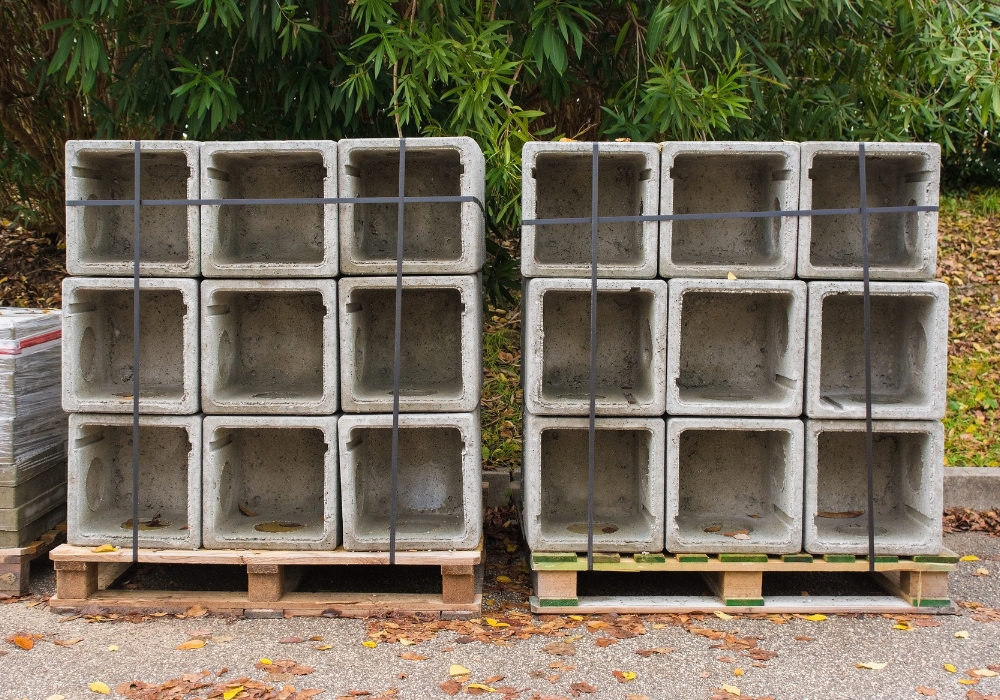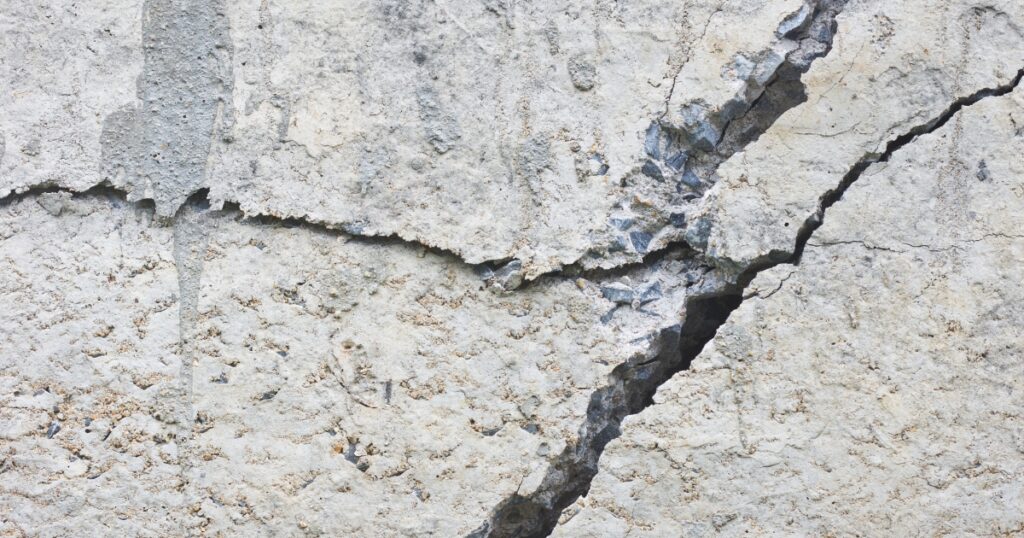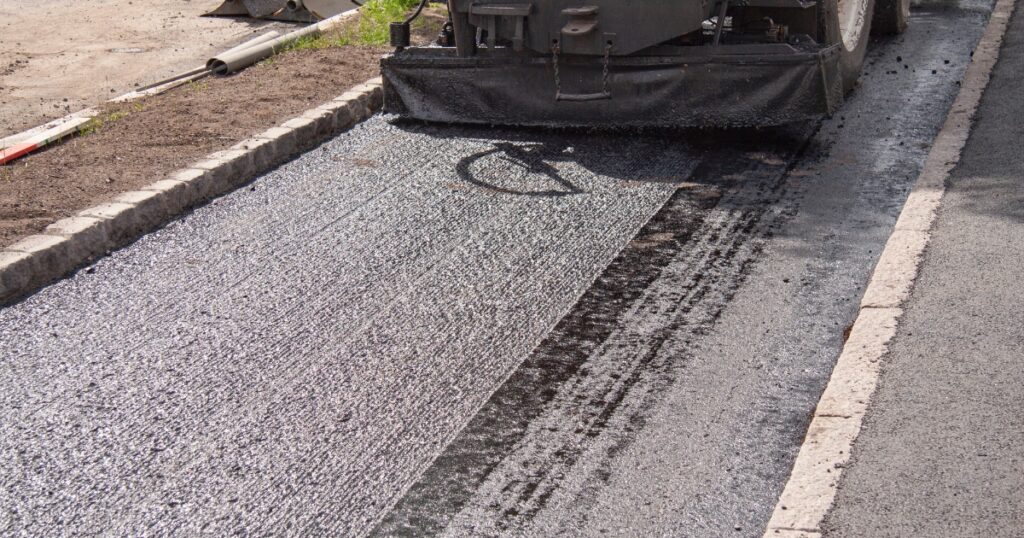
Accuracy in building isn’t just important; it’s absolutely critical, especially when you’re talking about formwork construction. We’ve been through the wringer ourselves and understand how essential precision really is.
That’s why we hit the books and uncovered Maitland’s method for top-notch formwork construction. This yarn will walk you through enhancing your accuracy and efficiency using Maitland’s savvy techniques.
Stick around to learn a trick or two.
Understanding Formwork Construction
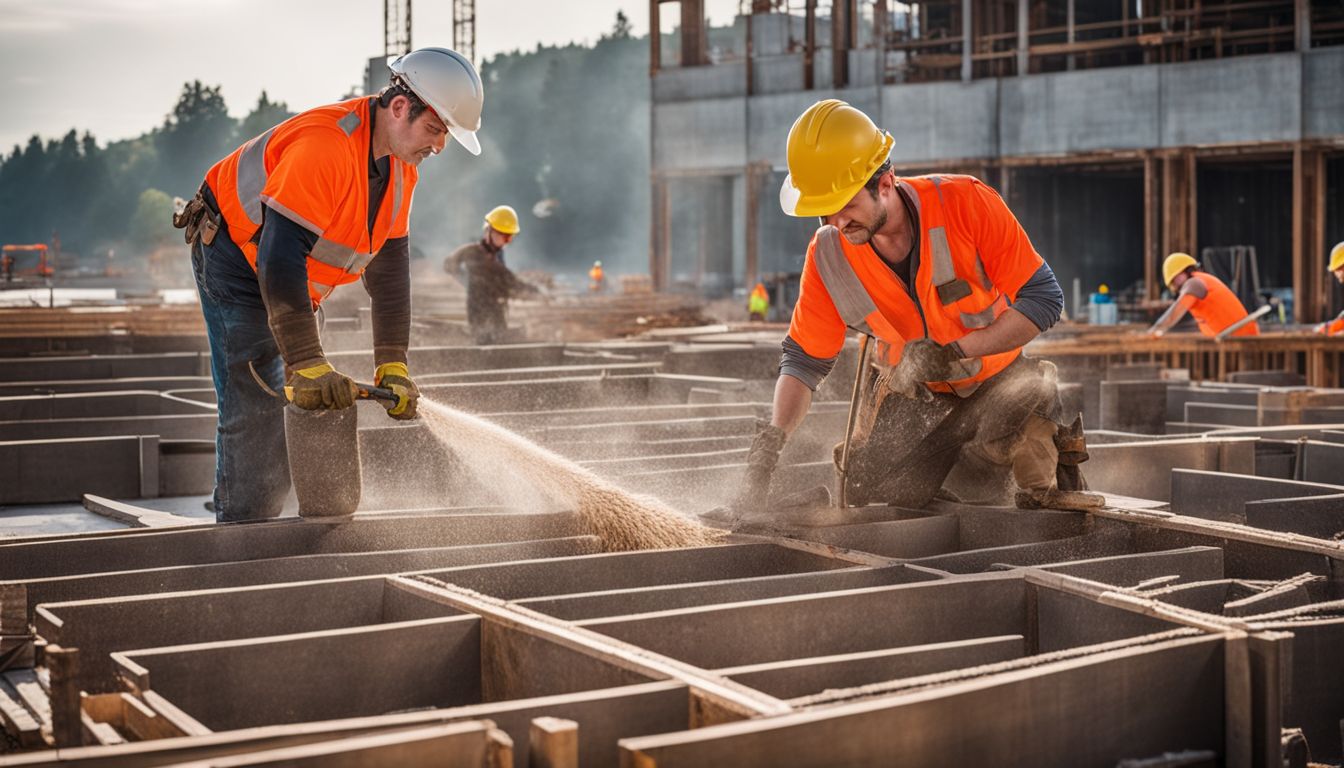
Understanding formwork construction involves the precise installation of temporary molds or structures to support concrete as it sets. It ensures the accurate formation of the desired shape and design, significantly impacting the quality and stability of concrete structures.
Definition of formwork
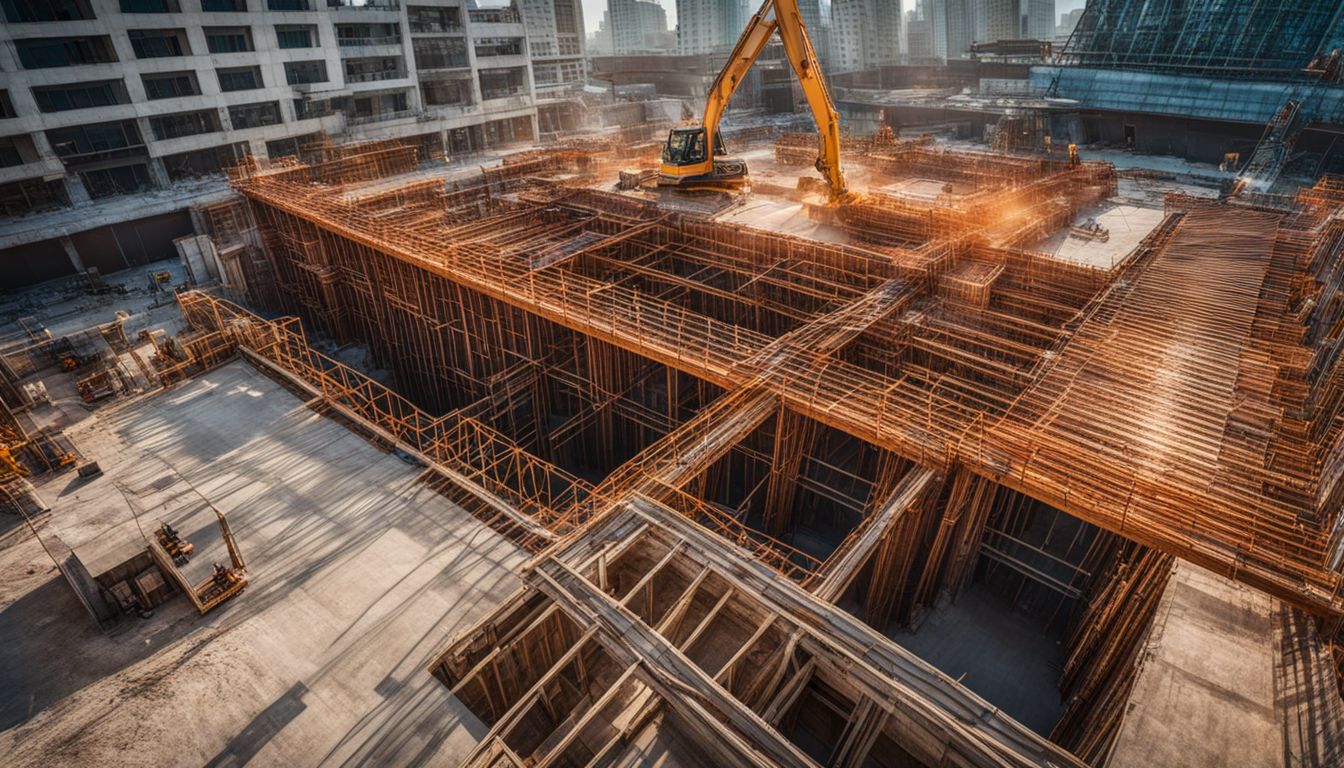
Formwork refers to the temporary or permanent molds into which concrete or similar materials are poured. In construction, formwork is critical because it shapes the final outcome of a structure, holding the concrete in place until it hardens and achieves sufficient strength.
Utilising advanced formwork technology facilitates precision and efficiency, ensuring our projects meet strict quality standards. Our approach integrates modern construction methods with meticulous planning to enhance formwork accuracy.
Precision in formwork construction paves the way for excellence in building.
The use of high-quality materials and cutting-edge techniques allows us to minimise waste and improve safety on-site. We ensure that each step of the process aligns with environmental standards and community expectations, setting new benchmarks for accuracy in action within the industry.
Moving forward, let’s explore why pinpoint precision is crucial in every stage of formwork construction.
Importance of accuracy in formwork construction

Achieving accuracy in formwork construction is crucial. Mistakes can lead to significant structural failures, increasing costs and causing delays. We focus on precision from the outset, ensuring every measurement aligns perfectly with our architectural plans.
This commitment reduces the risk of errors that could impact safety and overall project integrity.
Our approach streamlines the process, reinforcing efficiency in Maitland’s formwork construction methodology. Accurate formwork guarantees not only the strength and durability of concrete structures but also supports our goal of minimising waste and optimising resources.
Moving forward, we apply this stringent standard to every aspect of our projects, setting a new benchmark for quality in the construction industry.
Maitland’s Approach to Formwork Construction

Maitland’s approach to formwork construction prioritises precision and efficiency. The implementation strategy revolves around utilising modern construction methods and techniques tailored for accuracy, underpinning the realm of formwork construction.
Overview

We take a methodical approach to formwork construction, focusing not just on the what but also on the how. Our strategy marries accuracy with efficiency, ensuring that every project we undertake meets high standards without compromising speed or quality.
This begins with an in-depth analysis of each task’s unique requirements, followed by the implementation of proven techniques and modern construction methods. We place a strong emphasis on precision throughout our projects because we understand that even small inaccuracies can lead to significant complications down the line.
Our dedication extends beyond mere construction; it incorporates waste minimisation and environmental impact assessments into our planning stages. This holistic view ensures that we not only create structures that stand the test of time but also contribute positively to their surrounding environments and communities.
Through this dual focus, we aim to maintain our position at the forefront of efficient formwork construction while pushing industry standards ever higher.
Implementation strategy

Moving from the overview to our implementation strategy, we outline clear steps to ensure Maitland’s approach to formwork construction meets high standards of accuracy and efficiency.
Our team focuses on precise planning from the start, identifying specific project needs and setting realistic timelines. This groundwork is crucial for avoiding misunderstandings and ensuring all members are aligned with the project goals.
We engage in continuous communication with all stakeholders involved in the construction process. Regular updates and feedback sessions allow us to adjust our strategies swiftly if needed, guaranteeing that we maintain momentum towards efficient completion.
This adaptive method ensures that we tackle challenges head-on while staying committed to delivering top-notch formwork solutions.
Techniques employed

We at Maitland have developed a series of innovative techniques to enhance the accuracy and efficiency of formwork construction. Employing these methods allows us to meet our commitment to delivering high-quality projects on time and within budget.
- Precision levelling tools are used extensively across our sites to ensure that every element of the formwork is perfectly aligned. This step is critical in preventing costly adjustments later in the construction process.
- Modular formwork systems offer flexibility and speed, enabling quick assembly and dismantling while maintaining high safety standards.
- We incorporate computer – aided design (CAD) for detailed planning and visualisation of projects before physical work begins, reducing the risk of errors.
- Advanced monitoring technology tracks the progress and quality of formwork construction in real – time, allowing for immediate corrections when necessary.
- Our teams apply just-in-time (JIT) delivery methods for materials, which minimises waste and ensures that resources are available exactly when needed.
- Environmental sustainability guides our choice of materials, opting for reusable or recyclable options wherever practical.
- Tailored safety training equips our workers with knowledge on the latest health and safety protocols specific to formwork construction.
These strategies demonstrate Maitland’s dedication to innovation in achieving construction efficiency, waste minimisation, and enhanced safety measures on all projects.
Focusing next on how these techniques collectively contribute to heightened efficiency in Maitland’s formwork construction sheds light on their tangible benefits beyond accuracy alone.
Efficiency in Maitland’s Formwork Construction
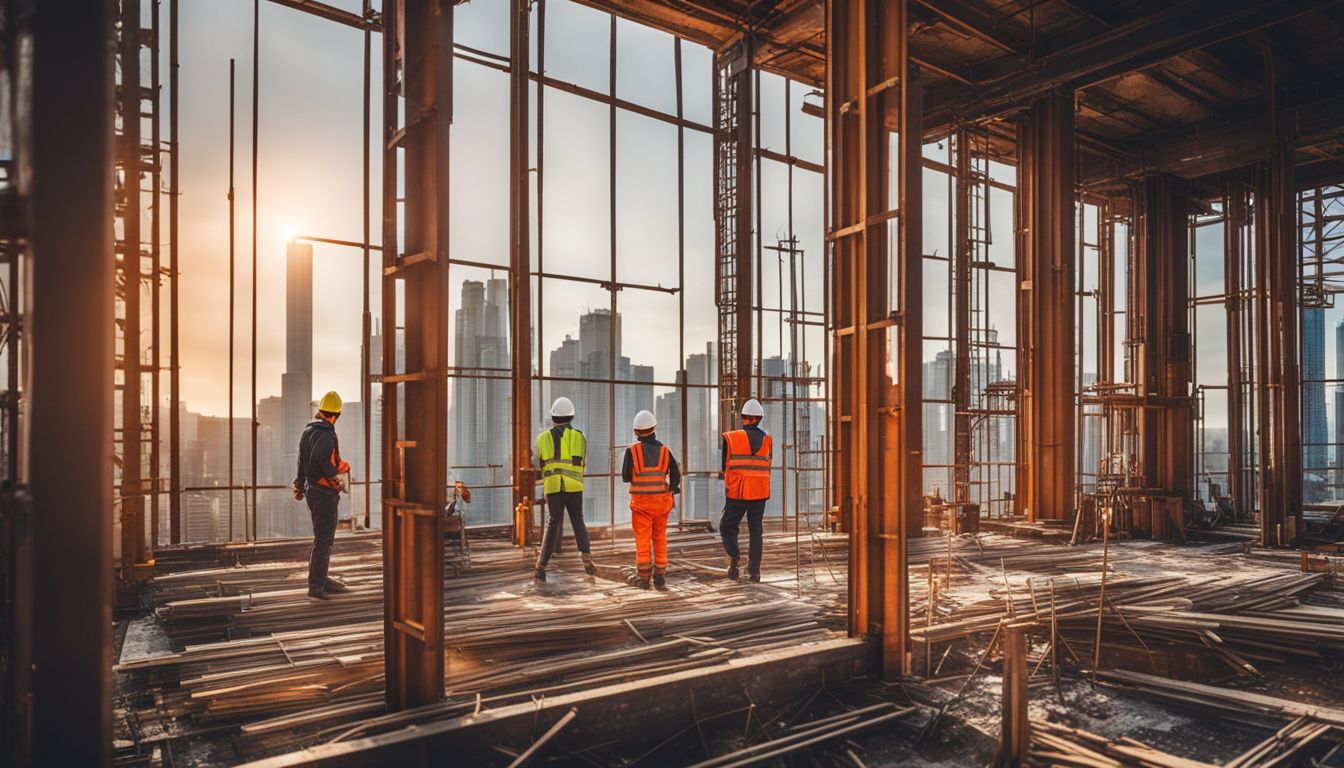
Maitland’s formwork construction prioritises efficiency by minimising waste, employing modern construction methods, and emphasising precision to enhance productivity. This approach ensures that construction processes are streamlined, making a significant contribution to industry standards.
Minimising construction waste

We actively pursue waste minimisation strategies in our formwork construction projects to boost efficiency and reduce environmental impact. Careful planning and precision in design allow us to use materials more effectively, cutting down on excess that typically ends up as waste.
By implementing modern methods and reusing materials whenever possible, we significantly lower the volume of discarded resources.
Our approach also involves rigorous training for our teams to ensure every piece of material is used optimally. This not only helps in reducing costs associated with waste removal but also aligns with our commitment towards sustainable construction practices.
With these efforts, we contribute to a greener building process while maintaining high standards of quality and accuracy.
Efficiency and sustainability go hand in hand in contemporary construction.
Next, we explore the use of modern construction methods enhancing project outcomes.
Use of modern construction methods
We embrace modern construction methods to revolutionise formwork construction, focusing on efficiency and waste minimisation. These innovative techniques allow us to complete projects faster while maintaining high standards of quality and precision.
By adopting cutting-edge technologies like 3D printing for complex formworks or utilising lightweight, recyclable materials, we enhance the sustainability of our projects.
Our team integrates software solutions for accurate planning and execution, ensuring every phase of the construction process aligns with our commitment to efficiency. This approach significantly reduces errors and rework, saving time and resources.
Through these modern methods, we set new benchmarks in the construction industry, demonstrating that advanced technology plays a crucial role in achieving optimal performance.
Role of precision in improving efficiency
Precision plays a pivotal role in improving construction efficiency. Accurate measurements and alignments reduce material wastage, saving costs and time. By precisely following construction plans and implementing modern techniques, Maitland optimises productivity while maintaining high standards of accuracy.
This approach minimises rework, ensuring that resources are used efficiently to deliver exceptional results within project timelines.
The integration of precision in the formwork process underpins our commitment to achieving operational excellence in the construction industry. It empowers us to continually innovate and raise industry benchmarks for efficiency and quality.
The emphasis on precision not only drives productivity but also contributes to sustainable construction practices that benefit both our clients and the environment.
Safety Measures in Maitland’s Formwork Construction
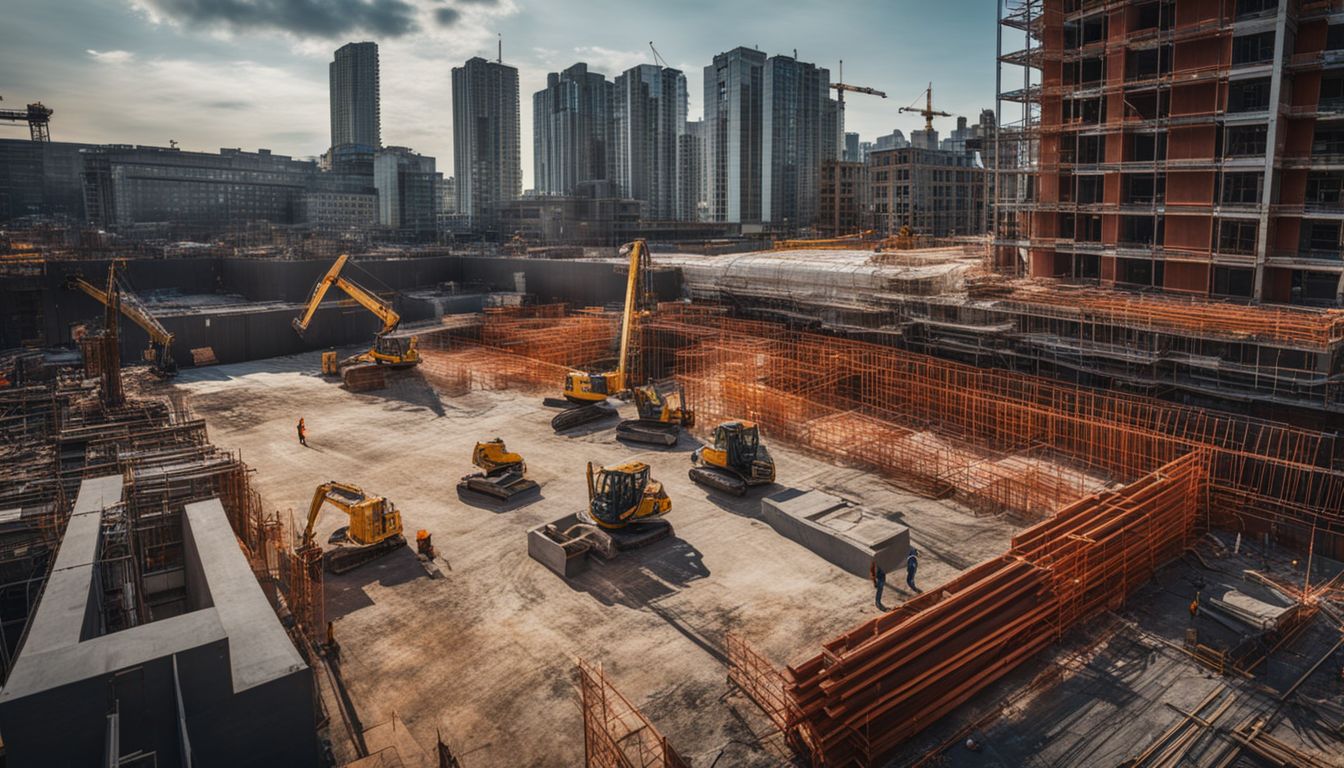
Maitland’s formwork construction prioritises safety through the integration of health and safety features, ensuring compliance with safety protocols and regulations. To find out more about how these measures contribute to safe construction practices, continue reading.
Integration of health and safety features
In Maitland’s approach to formwork construction, we integrate advanced health and safety features to ensure a secure working environment. This includes:
- Implementation of state-of-the-art safety protocols to safeguard workers during all construction phases.
- Adherence to stringent safety regulations and standards to uphold the well – being of the workforce and surrounding community.
- Utilisation of cutting-edge technology for real-time monitoring and ensuring a safe working environment.
- Incorporation of comprehensive safety training programmes for all personnel involved in the formwork construction process.
- Regular safety evaluations and audits to identify potential hazards and promptly address them.
- Collaboration with industry experts to stay abreast of the latest safety advancements and ensure continuous improvement in safety measures.
- Emphasis on creating a culture of safety awareness, encouraging proactive hazard reporting and risk mitigation within the workforce.
These meticulous efforts underscore our commitment to maintaining a safe working environment while delivering exceptional formwork construction efficiency.
Safety protocols and regulations
Ensuring the safety of our construction projects is paramount. Here are the detailed safety protocols and regulations that underpin our approach to formwork construction:
- Implementation of stringent safety training for all personnel involved in formwork construction, ensuring adherence to industry standards and best practices.
- Regular site inspections by qualified safety officers to monitor compliance with safety protocols, identify potential hazards, and implement corrective measures.
- Integration of advanced safety equipment and technology, such as fall protection systems, guardrails, and personal protective gear, to minimise safety risks for workers on-site.
- Adherence to local and national regulations governing construction safety, including proper documentation of safety procedures, emergency response plans, and regular reporting to relevant authorities.
- Collaboration with external safety consultants to conduct comprehensive risk assessments and develop tailored safety strategies for each formwork project.
This proactive approach to safety not only safeguards our workers but also contributes to the overall success of our construction endeavours.
Environmental Impact of Maitland’s Formwork Construction
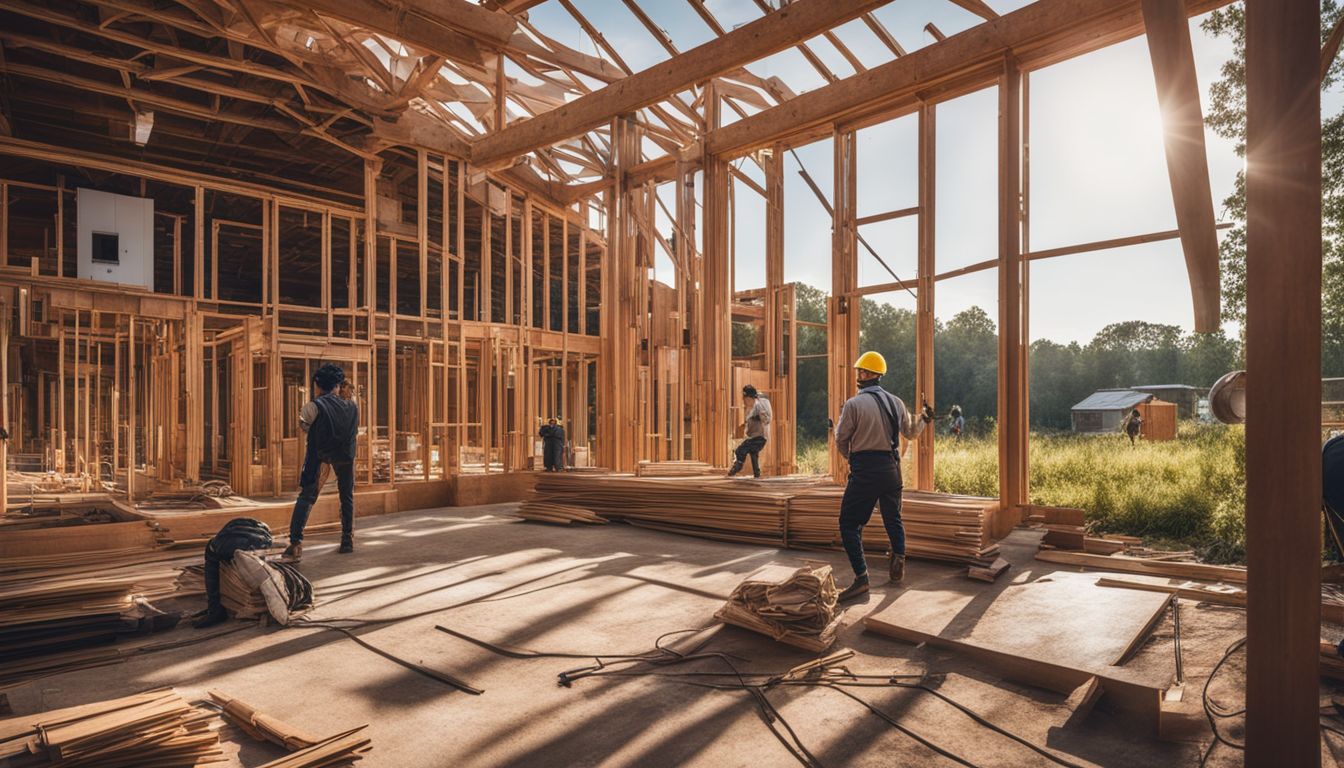
Maitland’s formwork construction prioritises minimising environmental impact. Techniques such as conducting environmental impact assessments and implementing measures to reduce environmental footprint have been instrumental in this endeavour.
For more insights into how Maitland’s approach is shaping the construction industry while prioritising sustainability, dive into the full article.
Environmental Impact Assessment
We conduct an in-depth environmental impact assessment to gauge the repercussions of our formwork construction projects on the surrounding ecosystems. This evaluation includes a comprehensive review of potential air, water, and soil pollution.
By employing cutting-edge techniques and modern construction methods, we effectively minimise environmental impact while ensuring precision and accuracy in our operations. Our waste minimisation measures contribute significantly to reducing the ecological footprint of our projects.
To minimise any detrimental effects on local ecosystems, we meticulously plan each project with the utmost consideration for its environmental implications. Through this meticulous process, we identify opportunities to employ sustainable materials and methodologies tailored towards reducing negative impacts while maintaining efficiency.
Measures for minimising environmental impact
Maitland’s commitment to minimising environmental impact goes beyond compliance, incorporating sustainable practices that align with local regulations and community expectations. Our approach includes:
- Utilising eco – friendly materials and recyclable formwork components to reduce waste and limit resource depletion, contributing to a more sustainable environment.
- Implementing energy – efficient construction processes and exploring innovative technologies that support reduced carbon emissions, in line with our dedication to environmental responsibility.
- Employing strategic site management practices aimed at preserving natural habitats and ecosystems, ensuring minimal disruption during construction activities while safeguarding biodiversity.
- Integrating water conservation strategies that minimise usage and promote responsible water management, supporting the preservation of this vital natural resource for future generations.
- Collaborating with environmental experts to conduct thorough impact assessments throughout all project phases, enabling proactive solutions for any potential environmental challenges.
Community Engagement in Maitland’s Formwork Projects

Maitland’s commitment to community engagement shapes each formwork project, ensuring that local needs are met and valued throughout the construction process. To discover how this approach enriches Maitland’s projects, delve into our insights on community involvement in formwork construction.
Assessment of community needs
Community needs are a pivotal consideration in our formwork construction projects. We actively engage with local residents and stakeholders to understand their unique requirements, ensuring that our projects align with the community’s vision and demands.
Through thorough engagement and feedback mechanisms, we tailor our construction approach to suit the specific needs of each community. This ensures that our projects seamlessly integrate into the neighbourhoods we work within, fostering positive relationships and creating spaces that truly benefit those who reside there.
Furthermore, by actively involving the community in the assessment process, we gain valuable insights that help us shape our projects to harmonise with local surroundings while addressing any concerns or challenges upfront.
By understanding and integrating these needs into our construction plans from inception to completion, we create structures that not only adhere to industry standards but also enrich the lives of those they serve.
Community involvement in construction projects
After assessing community needs, we actively involve the community in construction projects to ensure a collaborative approach that delivers a project aligned with local requirements, promoting better social integration. This involvement includes:
- Regular community meetings to gather feedback and address concerns throughout the construction process.
- Engaging local businesses and suppliers, fostering economic growth within the community.
- Providing employment opportunities for local residents, contributing to the area’s prosperity.
- Hosting open houses and site visits, allowing residents to understand the project’s progress and impact firsthand.
- Collaborating with community leaders to develop initiatives that benefit the local area alongside the construction project.
- Holding educational events or workshops to inform residents about the project’s benefits and address any misconceptions.
- Incorporating public art or landscape features suggested by the community, enhancing the project’s aesthetic appeal and cultural significance.
- Sponsoring or supporting local events and initiatives to strengthen ties and show commitment to community development.
These proactive efforts foster a sense of ownership within the community while addressing their needs, leading to successful and harmonious construction projects that benefit all stakeholders involved.
Architectural Canvas: How Formwork Shapes Maitland’s Concrete Structures

Formwork plays a pivotal role in shaping Maitland’s concrete structures. Our precise formwork construction techniques ensure that the architectural canvas reflects accuracy and precision.
By employing modern methods and a strategic implementation approach, we tailor each form to the project’s scope, resulting in visually stunning and structurally sound concrete structures that align perfectly with our community’s needs.
Our emphasis on accuracy underpins not only the efficiency of our construction process but also minimises environmental impact, contributing positively to the ever-evolving world of sustainable architecture and construction.
Using cutting-edge formwork planning, we meticulously measure corridor widths and route alignments, ensuring every aspect of the structure is tailored towards perfection. The precision in our formwork shapes not only enhances productivity but also sets new standards in the construction industry.
Case Study: A Successful Formwork Project in Maitland

The successful formwork project in Maitland exemplifies the applicability of Maitland’s approach in a real-world setting. The implementation of precise techniques and strategic planning resulted in a seamless construction process, ensuring minimal waste and optimal efficiency throughout the project.
Project description
Maitland’s recent formwork project involved a large-scale concrete structure with specific route alignment and corridor width requirements. The implementation of Maitland’s approach included precision measurements and the use of modern construction methods, ensuring accuracy in every step of the process.
This project exemplified Maitland’s commitment to minimising construction waste and prioritising efficiency.
The successful completion of this formwork project showcased the integration of health and safety features, set against a backdrop of community engagement. It underlined Maitland’s emphasis on addressing community needs, incorporating environmental impact assessments, and actively involving local residents in construction projects.
This case study highlights how meticulous planning, coupled with tailored construction techniques, can create impactful results that resonate within the community.
Route alignment and corridor width
Route alignment and corridor width play a crucial role in determining the feasibility and functionality of formwork projects. The strategic alignment of construction routes ensures efficient material transport, minimising delays and optimising productivity.
By carefully evaluating corridor width, we can tailor our approach to suit project-specific requirements, enabling safe and seamless movement of equipment and materials. This precision-driven planning underpins the successful execution of formwork construction projects, contributing to enhanced overall efficiency.
Moving forward into “Implementation of Maitland’s approach,” let’s delve deeper into how these strategies are put into action to achieve exceptional results in formwork construction.
Implementation of Maitland’s approach
Maitland\\’s approach to formwork construction is implemented through a meticulous process involving:
- Utilising cutting – edge technology and modern construction methods to ensure precision and efficiency.
- Strategically planning the project scope, employing tailored methodologies to meet accuracy requirements.
- Integrating health and safety features in all construction processes, adhering to safety protocols and regulations without compromise.
- Minimising environmental impact by conducting thorough environmental impact assessments and implementing measures for sustainability.
- Engaging with the community, conducting comprehensive needs assessments and involving local stakeholders in the construction projects.
Role of Formwork Planning in Achieving Accuracy

Formwork planning plays a crucial role in achieving accuracy. It involves meticulous assessment and tailored methodology to ensure precision in formwork construction, underpinning the efficiency of the entire project.
This approach not only minimises complexities but also contributes towards enhancing productivity and upholding industry standards.
Importance of planning
Effective planning is the cornerstone of successful formwork construction projects. It underpins efficiency, accuracy, and overall project quality. Meticulously outlining the project scope and aligning it with community needs sets the stage for tailored approaches that minimise environmental impact while maximising construction efficiency.
Precision in formwork planning not only streamlines operations but also contributes to waste minimisation and adherence to safety measures, ensuring a smooth implementation process.
With our suite of innovative methodologies, we navigate complexities towards a bespoke approach, enabling us to unlock the secrets of efficient formwork planning.
Methodology employed
Maitland’s formwork construction methodology hinges on rigorous planning and precise execution. By carefully measuring and mapping out the project scope, we ensure that our approach aligns with the specific requirements of each construction site.
Our use of modern construction methods incorporates cutting-edge technology to streamline processes and maximise efficiency.
We employ a systematic framework tailored towards achieving accuracy in every phase of the project, from material procurement to onsite assembly. This precision underpins not only the quality of our work but also our commitment to minimising waste through meticulous resource management.
Impact of Maitland’s Approach on the Construction Industry
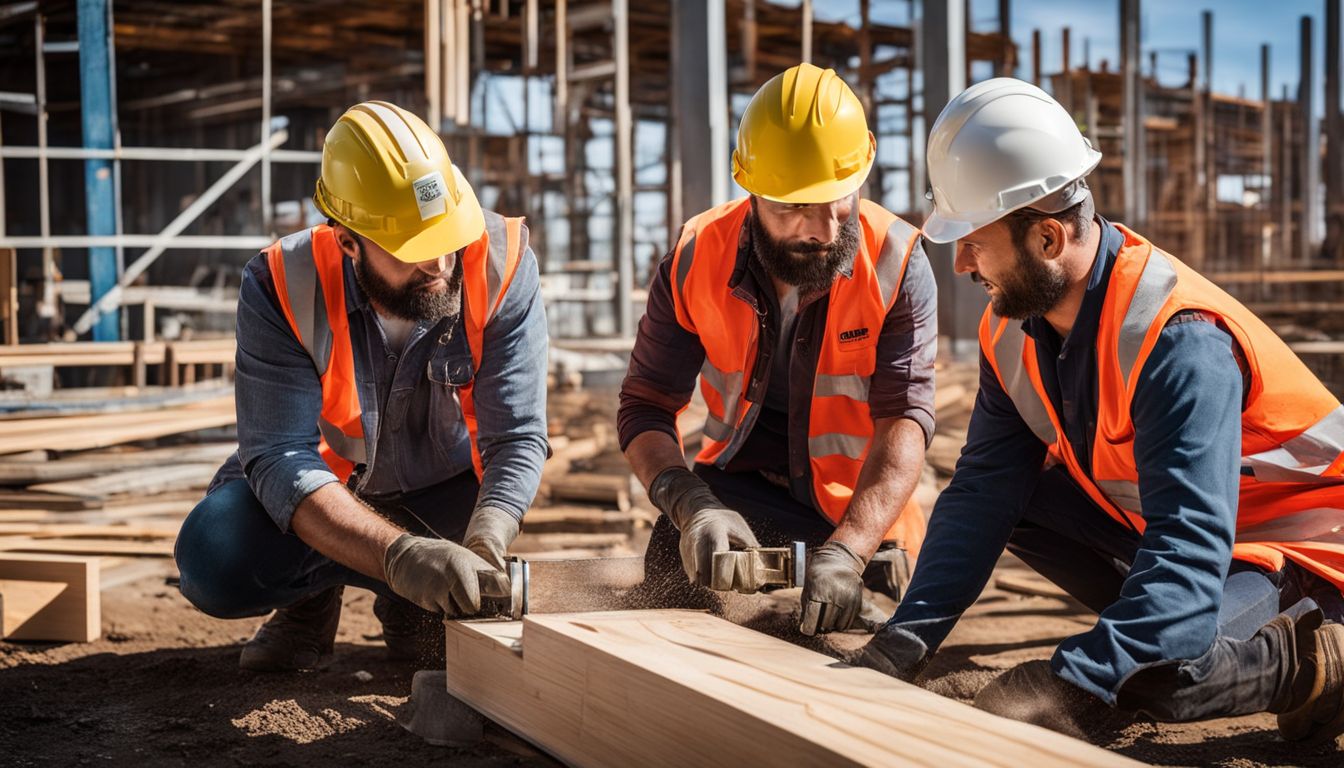
Maitland’s approach revolutionises construction industry standards, boosting productivity and streamlining processes. It contributes by setting a new benchmark for precision and efficiency in formwork construction.
Influence on productivity
Maitland’s approach significantly improves productivity in formwork construction, ensuring efficient use of resources and timely project completion. Modern construction methods and precision play a crucial role in enhancing productivity, minimising wastage while maintaining accuracy throughout the process.
This approach contributes to setting higher standards within the construction industry, ensuring that projects are completed with maximum efficiency.
The influence of Maitland’s method on productivity is evident not only from the reduced construction time but also in the streamlined processes that contribute to smoother project execution.
The meticulous implementation strategy underpins improved productivity and ensures that projects meet or exceed industry benchmarks for efficiency. With this approach, Maitland has transformed the landscape of formwork construction by offering a practical and innovative solution tailored towards advancing overall productivity within the industry.
Contribution to construction industry standards
Maitland’s approach significantly influences productivity and contributes to setting new benchmarks in the construction industry. Our precision-centred techniques have demonstrated how accuracy and efficiency can revolutionise formwork construction practices, ultimately raising the bar for industry standards.
By integrating modern methods with meticulous planning, we showcase a proactive model that emphasises not only productivity but also safety and environmental impact assessment.
Our commitment towards enhancing industry standards is evident in our dedication to developing tailored strategies that promote waste minimisation, community engagement, and sustainable construction practices.
Conclusion
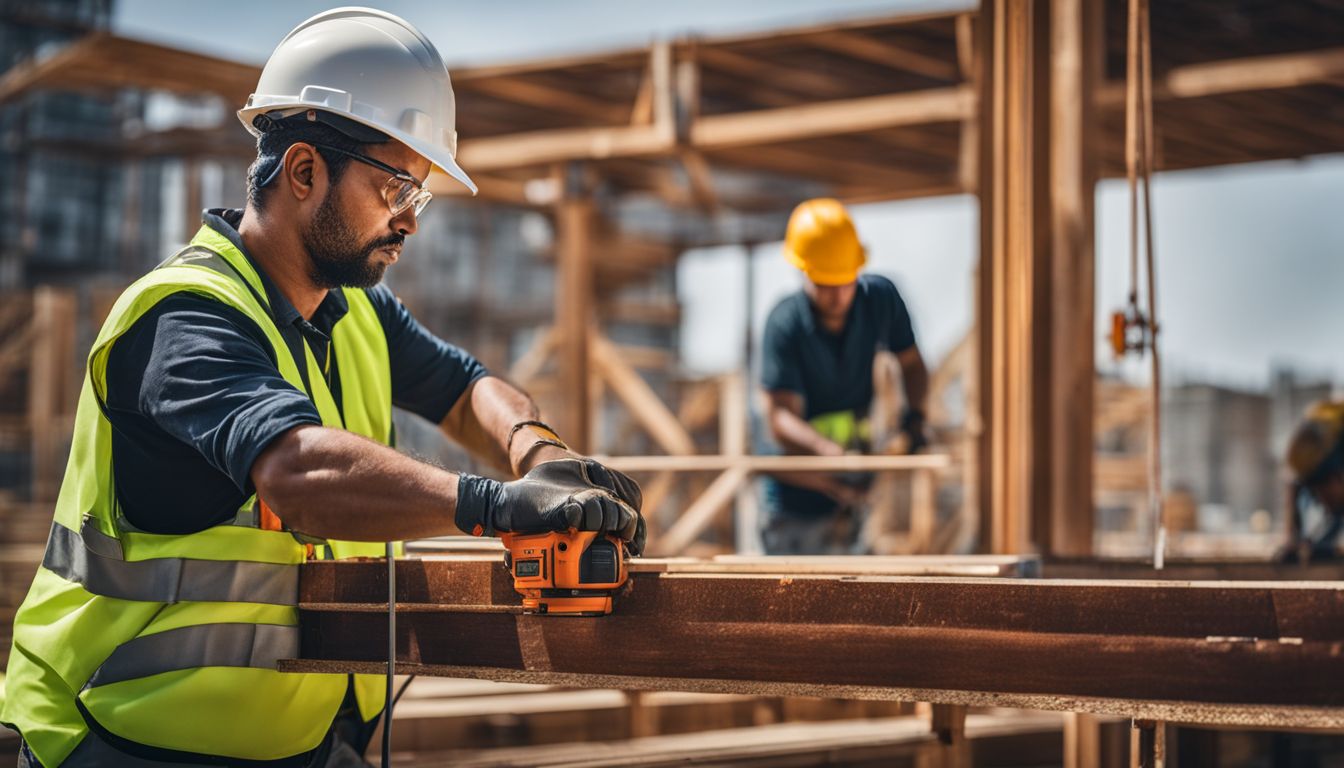
Maitland’s approach to formwork construction enhances accuracy and efficiency. It minimises waste, prioritises safety, and integrates modern methods. Community engagement and environmental impact are crucial considerations.
Maitland’s precision not only improves productivity but also sets industry standards. This approach underpins a sustainable and impactful future for the construction realm.
Discover how formwork is integral to the distinctive architecture of Maitland by exploring our feature on Architectural Canvas: How Formwork Shapes Maitland’s Concrete Structures.

